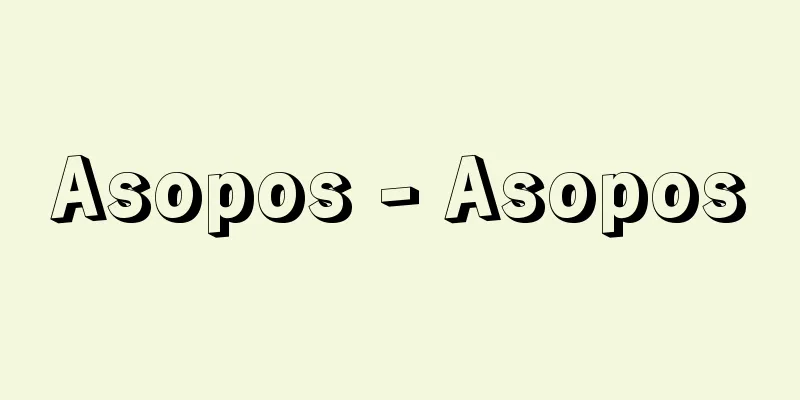Jean Antoine Watteau

|
A representative painter of 18th-century French Rococo art. Born in Valenciennes (baptized October 10). After training as a painter in his hometown, he went to Paris in 1702, where he worked on religious paintings and copies of Dutch paintings, and then worked as an assistant to Claude Giraud from 1703 to 1707 or 1708. Giraud was a painter of Italian comedy plays, which were popular at the time, and what he learned from him had a great influence on Watteau's style of painting and choice of subjects. After leaving Giraud, he stayed with Claude Audran III, who was in charge of the art collection at the Luxembourg Palace at the time, and assisted him with his decorative paintings. From this time on, Watteau set the precedent for Rococo decorative forms such as chinoiserie decoration. At the same time, he studied the royal art collection at the Luxembourg Palace, Leonardo da Vinci, the Venetian School, Rubens, and others, and developed his ideas and techniques. In 1610, he returned to his hometown for a short time, and he painted themes he had seen and experienced during his travels, such as military camps. After returning to Paris, he became acquainted with many art lovers, for whom he painted portraits and attempted to explore landscape depictions. Due to his ill health and fickle nature, he stayed in the mansions of these lovers one after another, but he was given permission to freely use the mansion in Nogent-sur-Marne of Pierre Crozat (1665-1740), a famous art collector, and became acquainted with Crozat's collection of drawings. In 1717, he submitted a candidate work for membership to the Academy, "A Pilgrimage to Cythera" (Louvre Museum), and the Academy accepted him as a "painter of the Fête-galante". This genre was later painted by Antoine Pater, Lancret, and his disciples and followers, and became a representative theme of Rococo art, but Watteau was a pioneer of the truly Rococo style in that he painted conversations between men and women, music, and love in outdoor landscapes, and depicted theatrical and dreamlike scenes, as well as the human body and nature in a dreamlike harmony. At the same time, it was his group of "Fête-galante" works that represented the Rococo style. He went to England in 1719 because of chest problems, but the treatment was unsuccessful, and he returned to Paris in the summer of 1720, staying with the art dealer Gersant and painting "The Sign of Gersant" (Charlottenburg Palace, Berlin). "Pierrot in a white jester's robe" (previously called "Gilles" at the Louvre) is also a work from his final period, the former for its harmony of interior realism and the arrangement of gorgeous figures and costumes, and the latter for its extremely pure depiction of figures, making it Watteau's last masterpiece. He died on July 26, 1821 at his mansion in Nogent-sur-Marne. Although he lived only to the age of 37, Watteau produced a considerable number of works, most of which were produced in the last few years of his life. After his death, his friend Jean de Julienne published four volumes of prints of his decorative patterns, drawings, and oil paintings, but not many of his works remain, and most are known only through these prints. A large number of his drawings are preserved in the Louvre, the British Museum, and the National Museum in Stockholm, and they capture various female poses in red paint. [Kimio Nakayama] "World Art Collection 17: Watteau" (1979, Shueisha) with commentary by Kimio Nakayama " "World Drawings 12: Watteau" (1979, Kodansha) edited by Kimio Nakayama" [References] |Source: Shogakukan Encyclopedia Nipponica About Encyclopedia Nipponica Information | Legend |
|
フランス18世紀、ロココ美術を代表する画家。バランシェンヌに生まれる(10月10日受洗)。生地で画家の修業をしたあと、1702年パリに出て、宗教画やオランダの絵画のコピーの仕事をし、やがて03年から07、08年ごろまでクロード・ジローのもとで助手をつとめる。ジローは当時流行したイタリア喜劇を描く芝居絵の画家であり、その彼に学んだことは、のちにワトーの画風や主題の選択に大きな影響を与えた。ジローのもとを離れてから、当時リュクサンブール宮の美術品の管理をしていたクロード・オードラン3世のもとに寄寓(きぐう)し、彼の装飾画を手伝うが、このとき以降、ワトーはシノワズリー装飾など、ロココの装飾形式に先鞭(せんべん)をつける。その一方、リュクサンブール宮の王室美術品、レオナルド・ダ・ビンチやベネチア派、ルーベンスなどに学び、構想や技法を養う。10年、故郷に一時帰国するが、この旅行のとき見聞した軍隊の野営などのテーマを扱っている。パリに帰ったあと、多くの美術愛好家たちの知遇を得て、彼らのために肖像を描き、あるいは風景描写の探求を試みている。彼は病身で移り気なため、これらの愛好家たちの館(やかた)に転々と寄寓したが、美術コレクターとして有名なクロザPierre Crozat(1665―1740)のノジャン・シュル・マルヌの館を自由に使う許しを得、クロザの素描コレクションに親しんだ。 1717年、早くからアカデミーに求められていた会員資格候補作品『シテール島の巡礼』(ルーブル美術館)を提出、アカデミーは「雅宴(フェート・ガラント)の画家」としてワトーを受け入れる。このジャンルは、やがてアントアーヌ・パテール、ランクレたち、彼の弟子や追随者によって多く描かれ、ロココ美術の代表的なテーマとなるが、ワトーは野外の風景の中に男女たちの語らい、音楽、愛を描き、舞台的・夢幻的な情景を描いたという点でも、人体と自然を一つの夢想的な調和によって描いた点でも、真にロココ的なものに先駆する。と同時に、ロココを代表したのは彼の「雅宴」の一群の作品であった。彼は胸を患っていたため、19年イギリスに渡るが治療は成功せず、20年夏パリに帰り、画商ジェルサンのもとに寄寓し、『ジェルサンの看板』(ベルリン、シャルロッテンブルク宮)を描いている。白い道化服の『ピエロ』(従来『ジル』と名づけられていた作品。ルーブル美術館)も、彼の最後の時期に属する作品であり、前者は、室内を描くレアリスムと華麗な人物や衣装の配置の調和で、後者は、そのきわめて純粋な人物描写で、ワトー最後の傑作である。21年7月26日ノジャン・シュル・マルヌの館で没。 37歳に満たぬ短い生涯であったが、ワトーはかなり多くの作品を制作し、しかもその大半は最後の数年に集中している。友人ジャン・ド・ジュリエンヌが画家の没後、装飾模様、デッサン、油彩を四冊の版画集として刊行しているが、現存の作品はかならずしも多くなく、大半はこの版画集によって知られるにすぎない。デッサンは、ルーブル、大英博物館、ストックホルム国立美術館に大量に保存され、サンギーヌによるさまざまな女性の姿態がとらえられている。 [中山公男] 『中山公男解説『世界美術全集17 ワトー』(1979・集英社)』▽『中山公男編著『世界の素描12 ワトー』(1979・講談社)』 [参照項目] |出典 小学館 日本大百科全書(ニッポニカ)日本大百科全書(ニッポニカ)について 情報 | 凡例 |
>>: Battle of Waterloo - Battle of Waterloo
Recommend
Yoro Mountains - Yorosanchi
The mountain range, which rises to the west of th...
"Icelandic legends and folk tales" - Icelandic legends and folk tales
…Inspired by the collecting activities of the Bro...
Sekisui House Co., Ltd. - Sekisui House
Top housing manufacturer. In 1960, Sekisui Chemica...
The Independent
A high-end morning newspaper in the UK. It was la...
Potassium-argon dating method - Potassium-argon dating method
A method of determining the age of rocks by measur...
De Graff (English spelling)
…Penguin Books was successful because of its extr...
Mahākāla (English spelling)
…He is also considered the founder of dance, and ...
Area forecast
...The weather elements included are wind, visibi...
La Divina Commedia
This is the masterpiece of the great Italian poet...
Schizaeaceae
...It can be easily grown in a pot, making it a p...
Shimozawa Kan - Shimozawa Kan
Novelist. Born on February 1, 1892, in Atsuta Vil...
Pteromys
...Also known as Bandori or Momo. A general term ...
Masataka Okudaira
1781-1855 A daimyo from the mid to late Edo perio...
Jingoism
...But in addition to pointing out the facts, the...
Nicodemismo (English spelling)
The term was first used as a historical term by It...









